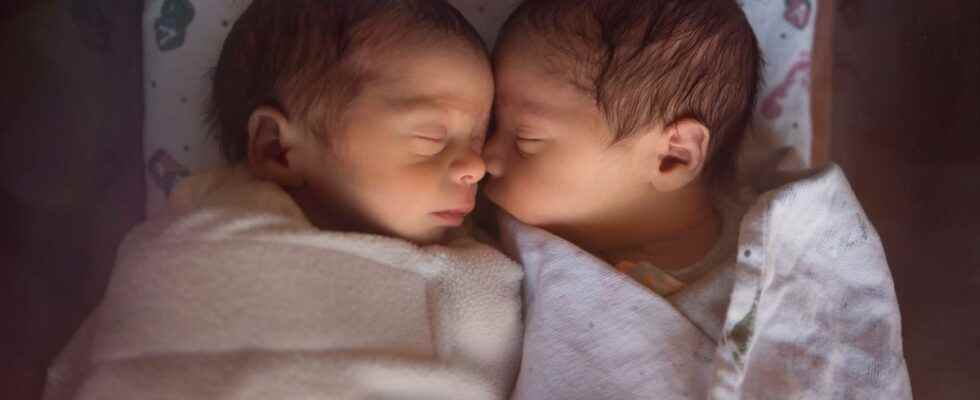Published on
Updated
Reading 3 mins.
In Portland, a couple gave birth to twins whose embryos had been frozen for thirty years. A world first.
According to the National Embryo Donation Center, Lydia and Timothy Ridgeway, the two twins born on October 31, may be the oldest frozen embryos born at term.
Embryos frozen since 1992
Although they were already parents of four other children, Rachel and Philip Ridgeway strongly wanted to welcome children born by in vitro fertilization into their family.
“We never had in mind a predefined number of children“, specifies Philip Ridgeway, the future father. “We always thought that we would have as many (children) as God wants to give us, and… when we heard about embryo adoption, we thought it was something we would like to do..”
The couple then began their search and turned to the National Embryo Donation Center in Knoxville, Tennessee (center where the twins’ embryos were created and frozen on April 22, 1992).
When applying for IVF, the duo said they wanted to benefit from “special” embryos, for which it was difficult to find recipients. To choose their embryos, the couple therefore restricts itself to the files of former donors, listed for a long time.
On March 2, three embryos are transferred to Rachel, but one of them will not survive.
On October 31, 2022, the two children, a boy named Timothy and a girl named Lydia, are born perfectly healthy.
According to Dr. Gordon, the couple’s doctor, the use of old frozen embryos presents no risk.
“It doesn’t appear that a sperm, egg, or embryo stored in liquid nitrogen knows time. He just wakes up 30 years later, and he never knew he was asleep.”
If the age of the embryo does not seem to matter, the age of the woman who donated the egg does. The younger and healthier it is, the more the embryos have a tenfold chance of survival.
“We just wanted those who had been waiting the longest”
As the father of the family mischievously points out, “In a sense, they are our oldest children, even if they are our youngest“.
He also added: “We weren’t looking to get the longest frozen embryos in the world. We just wanted those who had been waiting the longest.”.
NO to diets, YES to WW!
Embryo storage in France
The biomedicine agency recalls thee framework related to the conservation of embryos.
Who can use embryo conservation?
For couples undergoing in vitro fertilization (IVF).
What purpose ?
To give additional chances of pregnancy during the same IVF attempt.
How and where are they stored?
By freezing and storing embryos, which are not immediately transferred to limit the risk of multiple pregnancies, with a view to their subsequent transfer.
In authorized centers for medically assisted procreation (MAP) where the embryos are stored in identified straws and placed in a tank of liquid nitrogen.
What are the choices once the conservation is done?
- Extend conservation for a child’s project;
- Donate the embryos to other people (any couple made up of a man and a woman or two women or to any single woman, provided they are of childbearing age);
- Donate the embryos to scientific research;
- Request the end of storage.
How long are they kept?
Technically, the storage of embryos is not limited in time. For the child project, it is preferable not to wait too long to schedule the transfer of the embryos.
In what situation can the storage of embryos be interrupted?
Storage may be interrupted if the parental project is terminated at the request of both spouses or the single woman who has had recourse to ART. It can also be interrupted in the event of separation or disagreement between the spouses on the continuation of the storage or at the end of 5 years of storage, or if the couple does not respond several times to the annual reminder letters from their center of ‘amp.
